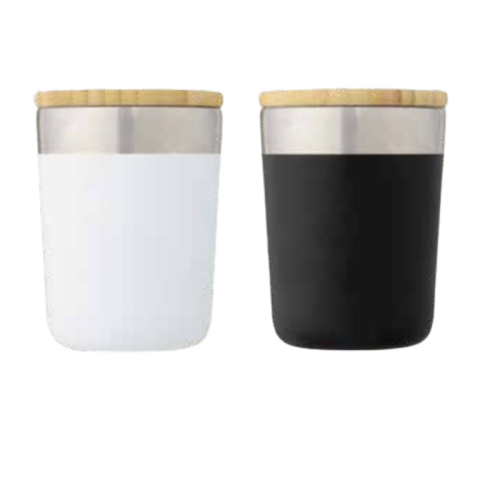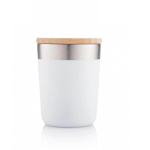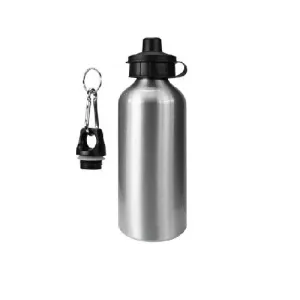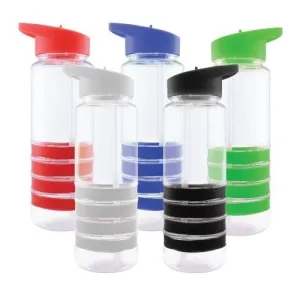The most commonly used material in stainless steel tumblers is Grade 304 stainless steel, also known as 18/8 stainless steel. It contains 18% chromium and 8% nickel, making it highly resistant to rust and corrosion. Grade 316 stainless steel is another option, often used in tumblers designed for harsher environments. This grade contains molybdenum, which offers additional resistance to corrosion, especially in saltwater or industrial environments.
3.2. Silicone
Many tumblers feature silicone grips or seals on their lids for added comfort and to prevent leaks. Silicone is heat-resistant, flexible, and adds a layer of functionality to the design.
3.3. BPA-Free Plastic
Some tumbler lids are made from BPA-free plastic, which provides transparency and durability without the health risks associated with traditional plastics.
Select the color
Select Variant
Select quantity
Stainless Steel Tumbler: A Comprehensive Exploration of Its Benefits, Features, and Applications
Stainless steel tumblers have become a staple in daily life, offering a practical and eco-friendly solution to modern hydration needs. These versatile tumblers are used in various settings, from offices and gyms to outdoor adventures, due to their durability, sleek appearance, and exceptional insulation properties. In this detailed article, we will explore the many aspects of stainless steel tumblers, delving into their benefits, features, materials, manufacturing process, and wide-ranging applications. Additionally, we will touch on their environmental impact, market trends, and why they have become such a popular choice for both personal and corporate use.
1. Understanding Stainless Steel Tumblers
A stainless steel tumbler is a cylindrical drinking vessel typically designed to maintain the temperature of liquids, either hot or cold, for extended periods. Its primary material, stainless steel, offers superior resistance to rust, corrosion, and wear, making it a highly durable and reliable choice.
Basic Structure of a Stainless Steel Tumbler
- Inner Layer: Usually made of food-grade stainless steel (304 stainless steel is common), this layer comes into direct contact with beverages.
- Outer Layer: The outer part of the tumbler is also made from stainless steel but often features additional finishes such as powder coating or silicone for aesthetics and added grip.
- Vacuum Insulation: The space between the inner and outer layers is evacuated of air to create a vacuum, which helps in minimizing heat transfer through conduction or convection, thereby providing exceptional temperature retention.
- Lid: Many tumblers come with spill-resistant or airtight lids, often with sliding mechanisms or straw holes for convenience.
2. Advantages of Stainless Steel Tumblers
2.1. Durability and Longevity
Stainless steel is known for its strength and ability to withstand heavy use. Unlike plastic or glass tumblers, stainless steel tumblers do not easily crack, break, or warp, ensuring a longer lifespan. They are also resistant to scratches and dents, making them ideal for outdoor activities or travel.
2.2. Insulation Capabilities
One of the key features of stainless steel tumblers is their vacuum insulation, which maintains the temperature of drinks for several hours. Whether it's a hot cup of coffee or an ice-cold smoothie, a well-insulated tumbler can keep beverages at the desired temperature for extended periods, often up to 12 hours for hot drinks and 24 hours for cold drinks.
2.3. Eco-Friendliness
In a world moving toward sustainability, stainless steel tumblers offer an environmentally friendly alternative to single-use plastic cups and bottles. Their reusable nature reduces the demand for disposable products, and they are often fully recyclable at the end of their lifecycle.
2.4. Health Benefits
Unlike plastic, stainless steel does not leach harmful chemicals like BPA (Bisphenol A) into beverages, even when exposed to heat. This makes stainless steel tumblers a healthier choice for consumers concerned about chemical exposure.
2.5. Easy to Clean
Stainless steel tumblers are easy to maintain, as they are resistant to staining and odors. Most tumblers are dishwasher-safe, and their simple design makes them easy to hand-wash. Additionally, the non-reactive nature of stainless steel ensures that it won’t alter the taste of the beverage inside.
3. Materials Used in Stainless Steel Tumblers
3.1. Stainless Steel (Grade 304 and 316)
The most commonly used material in stainless steel tumblers is Grade 304 stainless steel, also known as 18/8 stainless steel. It contains 18% chromium and 8% nickel, making it highly resistant to rust and corrosion. Grade 316 stainless steel is another option, often used in tumblers designed for harsher environments. This grade contains molybdenum, which offers additional resistance to corrosion, especially in saltwater or industrial environments.
3.2. Silicone
Many tumblers feature silicone grips or seals on their lids for added comfort and to prevent leaks. Silicone is heat-resistant, flexible, and adds a layer of functionality to the design.
3.3. BPA-Free Plastic
Some tumbler lids are made from BPA-free plastic, which provides transparency and durability without the health risks associated with traditional plastics.
4. Manufacturing Process of Stainless Steel Tumblers
The manufacturing of stainless steel tumblers involves a series of steps that ensure durability, functionality, and aesthetic appeal. Below is a breakdown of the process:
4.1. Material Selection
High-quality stainless steel (usually 304 or 316 grade) is selected for its strength, corrosion resistance, and food safety standards. The stainless steel is cut into sheets or tubes, depending on the design.
4.2. Shaping and Forming
The raw stainless steel is then shaped into the basic form of the tumbler through methods such as:
- Deep Drawing: A metal forming process where stainless steel sheets are stretched into shape.
- Hydroforming: This process uses high-pressure water to shape the stainless steel into the desired form without the need for expensive molds.
4.3. Vacuum Insulation
The most critical aspect of the tumbler’s construction is the vacuum insulation. Two stainless steel walls are formed, and the air between them is removed to create a vacuum. This vacuum prevents heat transfer and provides the tumbler with its insulation capabilities.
4.4. Surface Treatment
The exterior of the tumbler is often powder-coated for added grip, aesthetics, and resistance to wear. Alternatively, the steel may be polished for a sleek, metallic finish.
4.5. Lid Fabrication
Lids are typically made from BPA-free plastic or stainless steel and include silicone seals to prevent leaks. Some lids feature sliding mechanisms or straws, depending on the design.
4.6. Final Assembly and Quality Control
Once all components are completed, the tumbler is assembled, and quality control checks ensure that the product meets durability, insulation, and leak-proof standards.
5. Applications of Stainless Steel Tumblers
5.1. Personal Use
For individuals, stainless steel tumblers offer a convenient way to carry beverages on the go, whether for the daily commute, gym, or outdoor activities. They are widely used by professionals, students, and athletes who need reliable hydration options.
5.2. Corporate Gifts
Stainless steel tumblers are increasingly popular as corporate gifts. Companies often customize tumblers with logos or branding and distribute them as promotional items or as part of gift hampers for employees or clients. This serves as both a practical gift and a marketing tool.
5.3. Hospitality and Retail
Many coffee shops and retail stores now offer stainless steel tumblers as eco-friendly alternatives to disposable cups. Some establishments even provide discounts to customers who bring their tumblers, further encouraging sustainable practices.
5.4. Travel and Adventure
Thanks to their durability and insulation capabilities, stainless steel tumblers are a favorite among travelers, hikers, and outdoor enthusiasts. They are designed to withstand harsh conditions, keeping drinks at the desired temperature even in extreme environments.
5.5. Fitness and Wellness
For fitness enthusiasts, stainless steel tumblers are ideal for carrying water, protein shakes, or smoothies to the gym or during workouts. Their ability to keep drinks cold for long periods makes them essential for staying hydrated during intense physical activities.
6. Environmental Impact of Stainless Steel Tumblers
In the context of environmental sustainability, stainless steel tumblers offer several benefits:
6.1. Reduction of Single-Use Plastic
One of the most significant advantages of using stainless steel tumblers is the reduction of single-use plastics. Every time a person uses a reusable tumbler instead of a plastic bottle or cup, they contribute to decreasing plastic waste in landfills and oceans.
6.2. Recyclability
Stainless steel is 100% recyclable, and at the end of its lifecycle, a tumbler can be melted down and repurposed into new products. This contrasts with plastic, which often degrades in quality when recycled and is less sustainable overall.
6.3. Energy Efficiency in Manufacturing
While stainless steel production does require significant energy, the longevity of stainless steel products means that the energy investment is spread out over many years of use. Moreover, technological advancements are making the production of stainless steel more energy-efficient.
7. Market Trends and Popularity
The demand for stainless steel tumblers has skyrocketed in recent years, driven by increasing environmental awareness and a shift towards sustainable consumer goods. Several key trends are influencing this market:
7.1. Customization and Branding
Businesses and individuals are increasingly opting for customized tumblers that feature unique designs, logos, or messages. This trend has made stainless steel tumblers a popular choice for corporate gifting and promotional items.
7.2. Eco-Friendly Consumer Preferences
As consumers become more environmentally conscious, there is growing demand for sustainable alternatives to plastic drinkware. Stainless steel tumblers, being reusable and recyclable, fit perfectly into this eco-conscious lifestyle.
7.3. Technological Innovations
New advancements in insulation technology and design have made stainless steel tumblers even more efficient at maintaining temperature. Companies are constantly innovating to create tumblers that are lighter, more compact, and capable of longer temperature retention.
7.4. Aesthetic Appeal
Design aesthetics play a crucial role in the popularity of stainless steel tumblers. Consumers today seek tumblers that are not only functional but also stylish. Many brands offer tumblers in a variety of colors, patterns, and finishes to appeal to different tastes.
| Product Name | InStock | Item Weight( Kg ) | Pieces in Pack | Carton Weight ( Kg ) | Carton Size ( Cm ) |
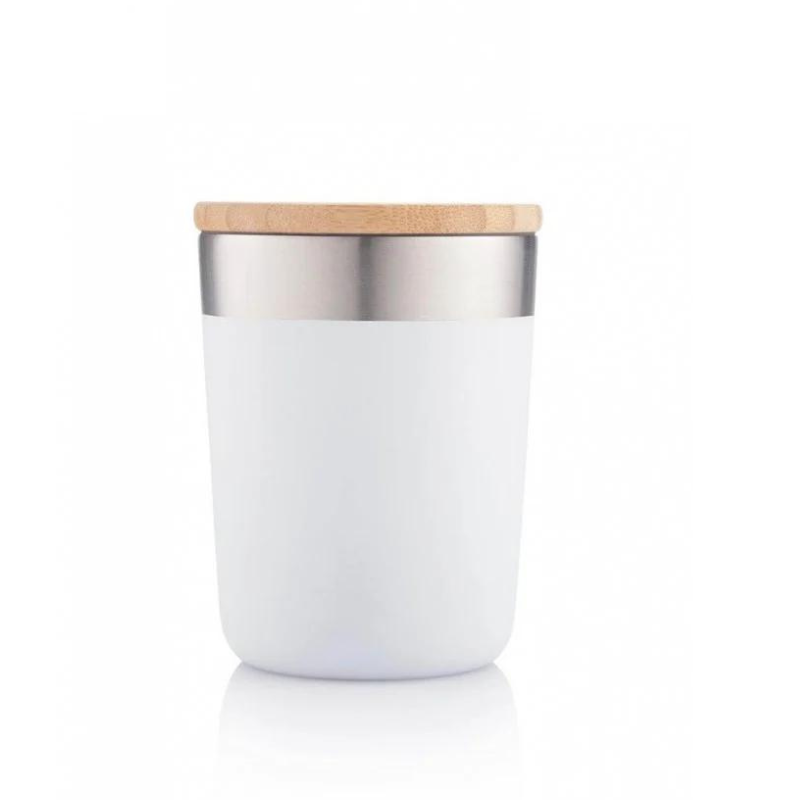 Stainless Steel Tumbler SKU: TM-016-W |
On Demand | 0.0000 | 0 | 0.0000 | 00 |
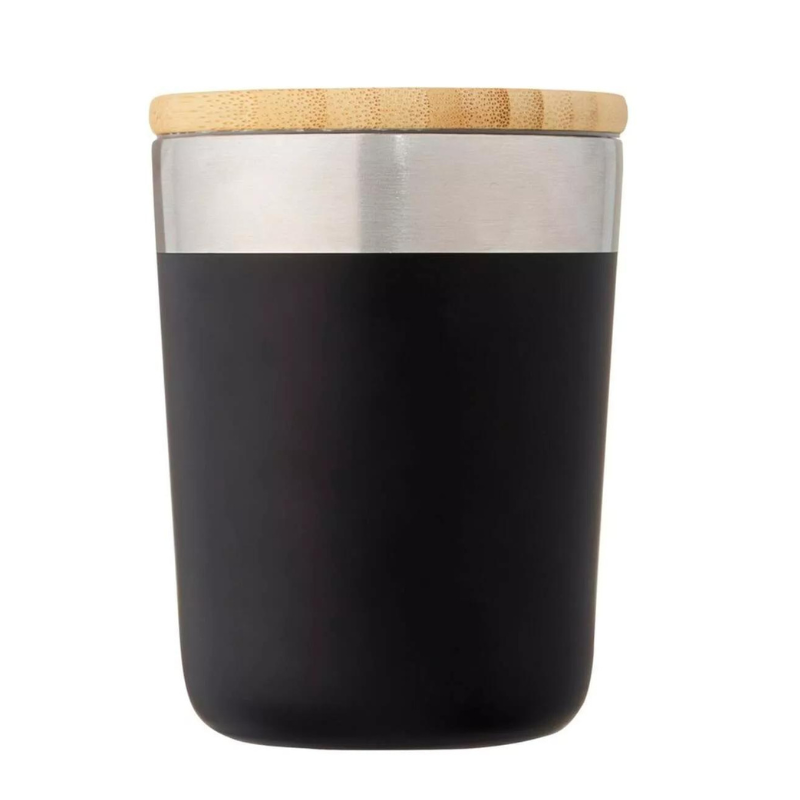 Stainless Steel Tumbler SKU: TM-016-BK |
On Demand | 0.0000 | 0 | 0.0000 | 00 |

